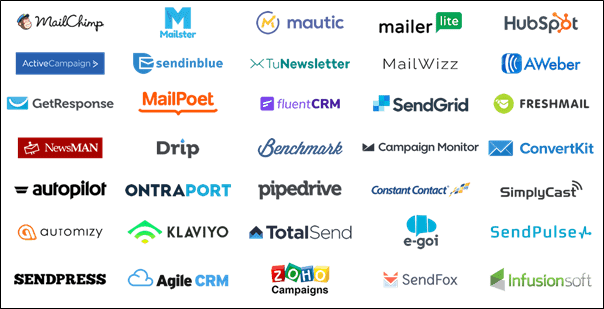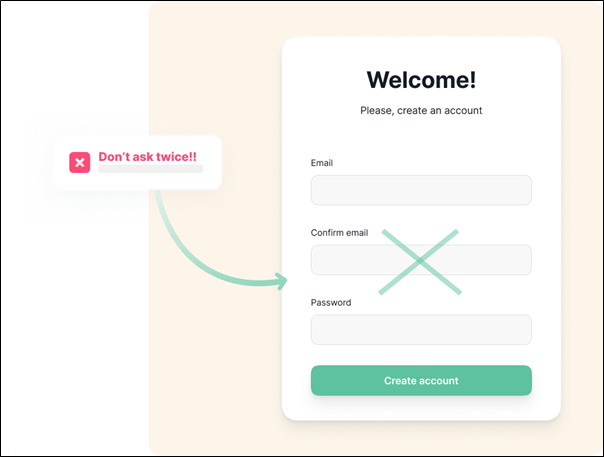Email marketing is a strategic battleground. Your inbox is likely a chaotic mix of newsletters, promotions, and other messages. You’ve probably experienced the frustration of sharing your email address during a purchase, only to be bombarded by countless emails from a mattress company when you only needed one. To stand out in this sea of emails, you need a well-thought-out strategy. In this guide, we will walk you through 29 email marketing best practices for 2023, complete with examples to help you launch your next successful email campaign.
Leverage an Email Marketing Platform When embarking on an email marketing campaign, don’t rely on standard email providers like Gmail or Outlook. Managing a moderate or large volume of emails and subscribers demands a specialised email marketing platform. Platforms like ConvertKit, Mailchimp, and Moosend offer all-in-one solutions, providing comprehensive tools for managing contacts, tracking metrics, and optimising email content.

Harness the Power of AI for Email Writing and Optimization AI can enhance your email marketing strategy by generating content and optimising emails. These AI-powered tools help you maintain your brand’s voice, determine the best send times, personalise emails, and even curate content based on subscriber behaviour.

1. Perfect Your Email Timing:- Sending emails at the right time is crucial for engagement. Utilise your email platform’s scheduled send feature and take time zones into account. Emails sent at 2 a.m. are unlikely to be read. The ideal day and time for sending marketing emails can vary based on audience demographics. Test different sending times to determine what works best for your subscribers.

2. Establish Opt-Ins:- Opt-ins are a way for readers or buyers to confirm their desire to receive your email newsletter. Employ the double opt-in method, where subscribers must confirm their intent to join your list by clicking a confirmation link sent via email. This helps prevent spam and ensures you’re emailing only those genuinely interested in your content.

3. Implement Auto Tags for Signups:- Use auto tags to automatically categorise and label contacts based on the source of their opt-ins or specific actions they take. This allows for tailored email campaigns and better personalization without the need for manual sorting.
4. Diversify Your Signup Forms:- Create multiple signup forms to increase opportunities for collecting new email contacts. Consider placing forms at the end of blog posts, on purchase confirmation pages, your “About” page, within chatbot interactions, and on your “Contact us” page.

5. Experiment with Pop-Up Forms:- Pop-up forms can be polarising, but they are still used by many brands. To decide if they are right for your audience, run an experiment using apps like Sumo, or monitor user behaviour with tools like Exit Monitor or HubSpot to trigger pop-ups as users are about to leave your page.

6. Offer Incentives:- Provide incentives to encourage email sign-ups. This could include special reports, discount codes, sale alerts, downloadable tools, free sessions, email courses, or sample products. Incentives can significantly boost your conversion rate.

7. Import Contacts from Various Sources:- Integrate your email marketing platform with other apps to automatically collect and tag contacts from different sources. Whether you are hosting webinars, selling tickets, or managing prospects, your email marketing platform can efficiently organize email addresses.

8. Segment Your Email Lists:- Prevent irrelevant content from cluttering your subscribers’ inboxes by creating email lists or segments for different target groups. Customise your emails based on each segment’s interests and needs.
9. Set Up a Robust Tagging System:- A robust tagging system is essential for effective email segmentation. Categories like gender, age range, location, career industry, job title, and relationship to your company help you send more personalised and relevant content to subscribers.

10. Avoid Purchasing Contacts:- Resist the temptation to buy contact lists from third parties. Not only can this be illegal, but it’s also ineffective. Contacts who have not opted in are unlikely to open your emails, making it a waste of time and resources.
11. Regularly Clean Your Contact List:- Low open rates can lead to your emails being marked as spam. Periodically review your contact list and remove contacts who never open your emails. A smaller, engaged list is more valuable than a large, unengaged one.
12. Change Sender Identity:- When Appropriate Use your email marketing platform to send emails from different personas or on behalf of clients. Adjust the sender’s identity to match your audience segment for a more personalized experience.

13. Avoid No-Reply:- Email Addresses Steer clear of using no-reply email addresses, as they appear cold and impersonal. Using a genuine sender’s address enhances deliverability and engagement.
14. Utilize Email Previews:- Use email preview tools to see how your emails will appear on both desktop and mobile devices. Avoid relying solely on character counts to gauge subject line length; instead, focus on how it appears visually.
15. Keep Emails Concise:- Emails should be concise, even if you have a lot to say. Long messages are better suited for blog posts or website content. Use emails as a preview with a clear call to action, leading recipients to more detailed content.
16. Place Value at the Beginning:- Lead your emails with the most valuable and actionable information. Email subscribers decide quickly whether to continue reading, so capture their interest from the outset.
17. Keep Emails Skimmable Enhance readability:- By making your emails skimmable. Use text formatting, headers, subheaders, and bullet points to guide readers and make content consumption easier.
18. Simplify Your Email Design:- Opt for a clean and straightforward email design. Avoid busy patterns, excessive colours, and intricate illustrations. Stick to one or two fonts and a consistent colour scheme.
19. Maintain Design Consistency:- Create or use templates that maintain consistent colours and fonts, ensuring a cohesive brand identity throughout your email campaigns.
20. Craft Engaging Subject Lines:- Effective subject lines are personal, engaging, and relevant to your audience. Tailor your subject lines to your industry and subscriber preferences, using AI text generators if needed.

21. Provide a Seamless Mobile Experience:- Test your emails on multiple platforms to ensure they are mobile-optimised. Resize images, text, and design elements to fit various screen sizes and preferences.
22. Provide a Seamless Mobile Experience:- Test your emails on multiple platforms to ensure they are mobile-optimised. Resize images, text, and design elements to fit various screen sizes and preferences.

23. Utilise Email Footer Space:- Leverage the email footer to add a personal touch to your emails. Consider including a letter from your CEO, brand mission statements, and links to social media or other ways to engage with your brand.

24. Master the Art of CTAs (Call to Action):- Craft clear and compelling CTAs to guide readers towards specific actions. Keep CTAs concise, utilise animations strategically, and limit the number of CTAs within an email to maximise impact.

25. Track Meaningful Email Marketing Metric:- Track key email metrics such as open rate, bounce rate, and click-through rate to understand your email campaign’s performance. Use the insights to make data driven improvements.

26. Utilise Split Testing:- A/B test different elements of your emails, such as subject lines, images, designs, and CTAs. Analyse the results and refine your email content based on what performs best.

27. Stay Compliant with Email Marketing Laws:- Adhere to email marketing laws and regulations, such as the CAN-SPAM Act. Include an unsubscribe link, honour unsubscribe requests promptly, use truthful “From” lines, and always include a physical address. Avoid sending emails to harvested email addresses or purchasing email lists.

28. Utilise Automations for Behavior Tags:- Automate the labelling of contacts based on their behaviours. This allows you to identify and target specific actions, such as purchases, email opens, link clicks, and cart abandonment. Automations ensure your emails react to subscribers’ activities effectively.
29. Maintaining compliance with email marketing laws:- Crucial to protect your brand’s reputation and ensure legal compliance. Familiarise yourself with the specific regulations applicable in your region or country, such as the GDPR in Europe.
In summary, mastering these Email Marketing best practices in 2023 is essential for delivering effective, engaging, and compliant email campaigns. By implementing these strategies, you can maximise the impact of your email marketing efforts with Lead Harvestor.
